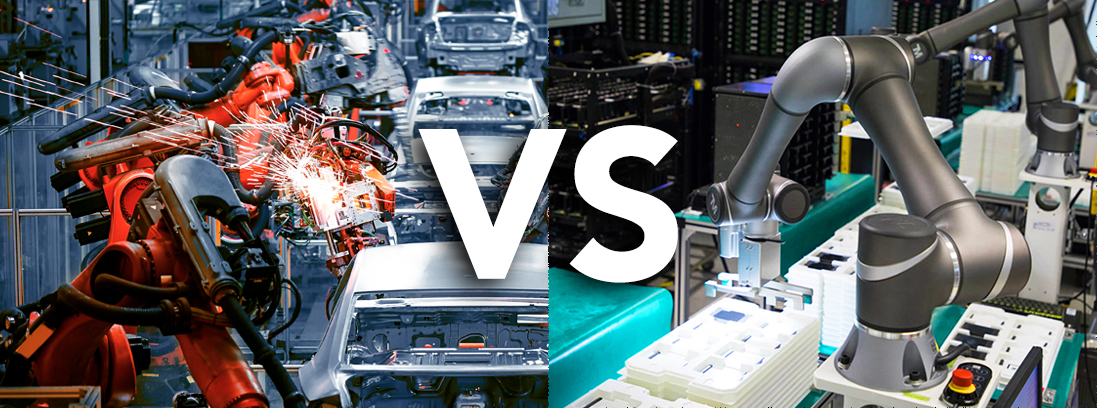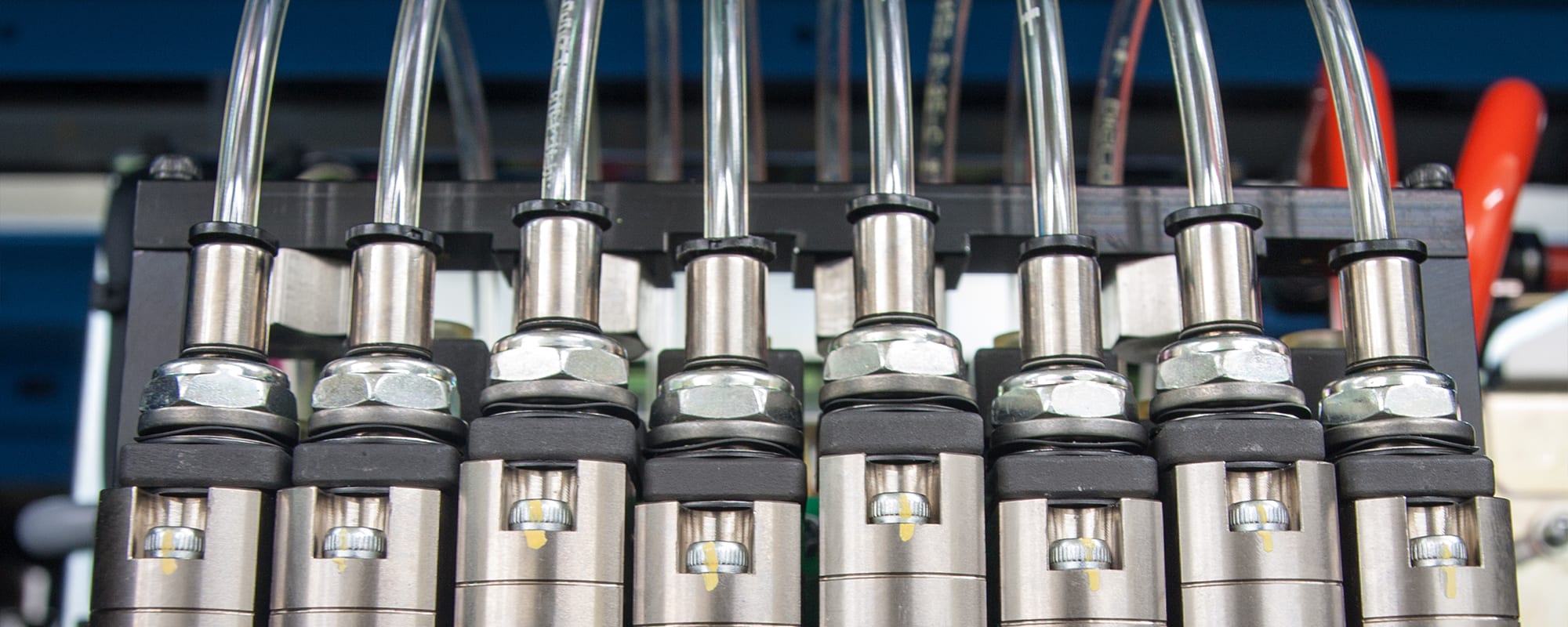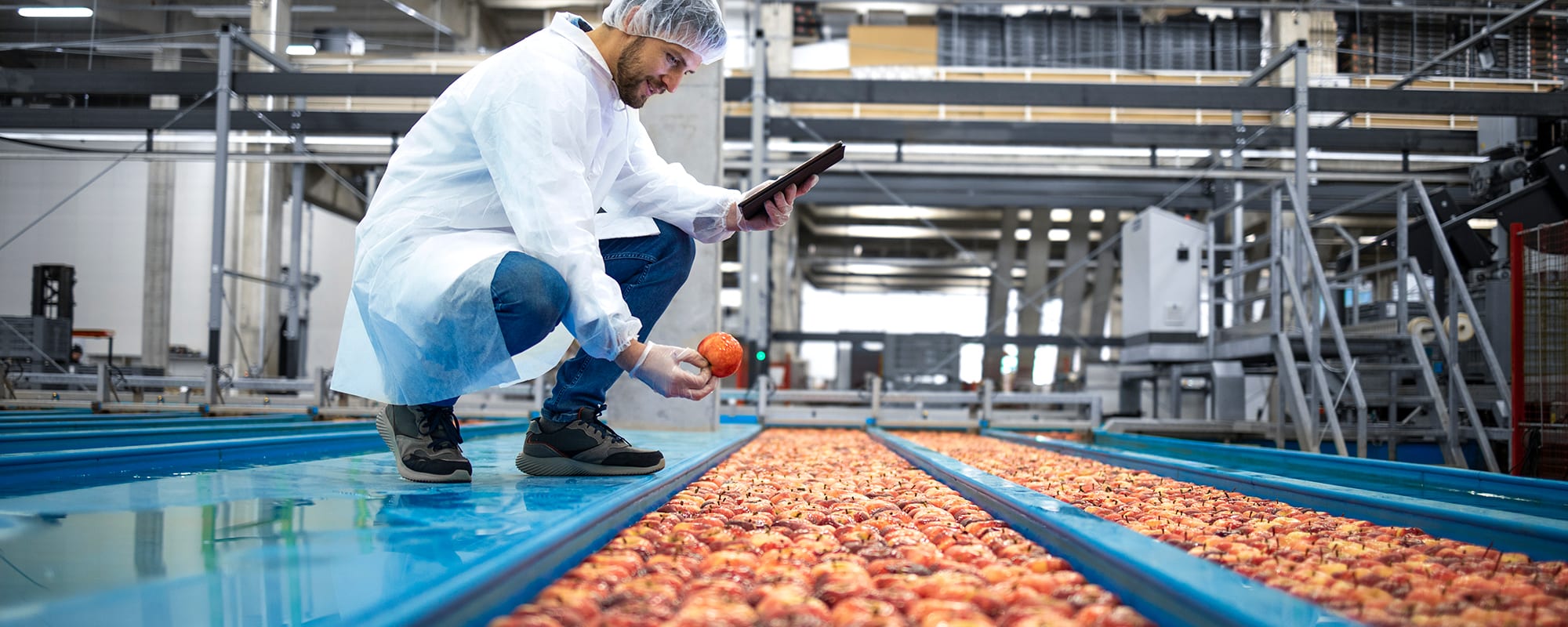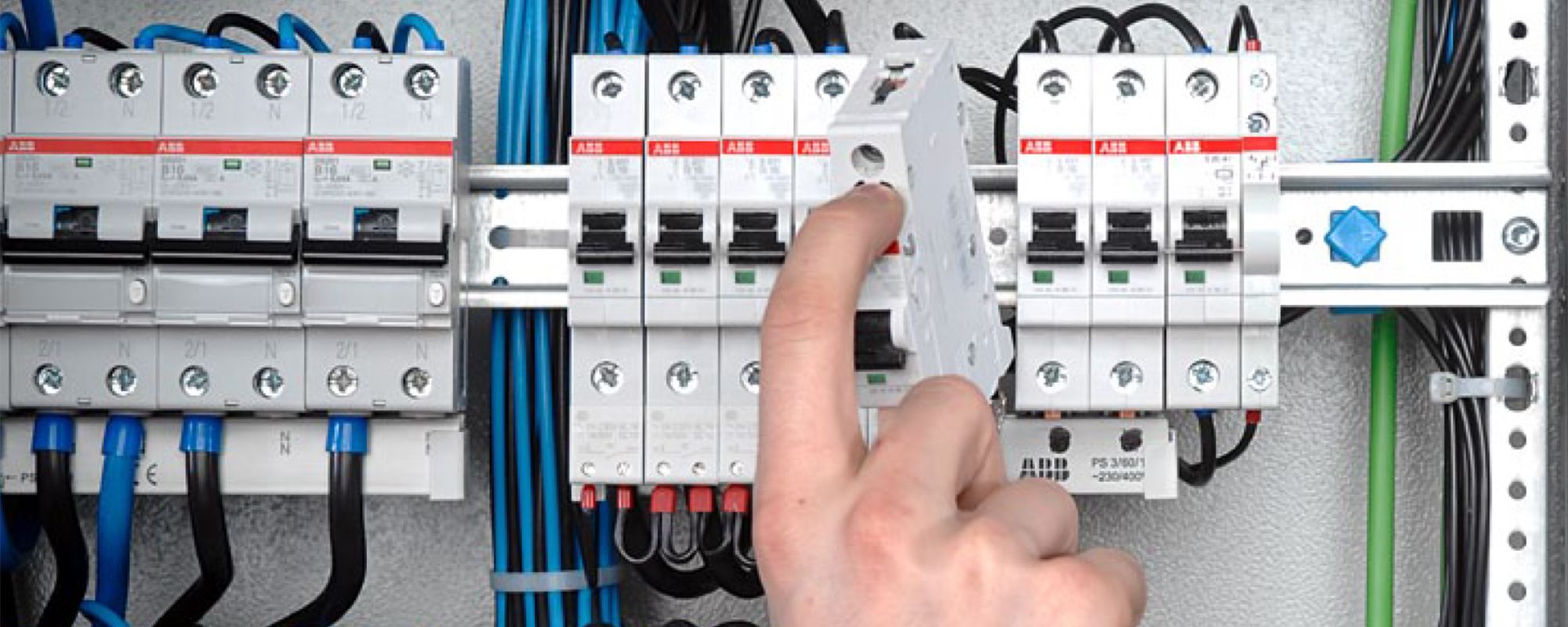Traditional industrial robots are big, fast and strong, able to effortlessly handle welders and automobile assemblies. Cobots are none of those things but are instead enabling a whole new range of collaborative manufacturing practices.
When asked to think of robots, many people might picture fast-moving automotive assembly and welding robots, or perhaps something from science fiction. There are countless forms of robots, with most of them being deployed in commercial and industrial applications.
Because traditional industrial robots are big, fast and strong, workers generally must be kept apart from them. As explained in What is a Cobot?, a newer generation of collaborative robots (cobots) are designed to work directly with humans.
Cobots are a form of robot, but with enough distinctions to warrant their own category.
This article will take a closer look at the differences and unique benefits of cobots as compared with traditional robots, referred to as robots for the remainder of this article.
Robots versus Cobots
Cobots enable manufacturers to perform the same tasks as robots, however they require a smaller investment and offer more flexibility for setup and range of operation.
ACTIVITY OR CHARACTERISTIC |
|
|
|---|---|---|
| Moving parts and products | ||
| Executing a path or trajectory motion | ||
| Working autonomously for extended durations | ||
| Increasing both productivity and quality | ||
| Reducing worker musculoskeletal injuries | ||
| Requires extensive sensors and guarding for safety | ||
| Taking up significant installation space | ||
| Demands expert robotics knowledge to integrate | ||
| Expensive (total installation and configuration cost) | ||
| Quick and easy to set up | ||
| Fits into existing workspaces | ||
| Readily moved from one task to another | ||
| Configurable by non-experts | ||
| Rapidly reconfigurable for different tasks |
Common Benefits of Robots and Cobots
If a person squints their eyes and stands at a certain distance as they view a cobot or a robot, there are many visual similarities. Although their paint jobs and other aesthetics may differ, both types usually have multi-jointed arms with some form of tool on the end. Indeed, both types are designed to perform work in industrial plants and commercial facilities. They both can move parts around and follow a path of motion, sometimes called a trajectory. This path can be a rigorous X/Y/Z coordinate motion, or it can be smoothly interpolated from one location to the next. Although cobots are the slower of the two, both can accelerate, decelerate, move and position themselves quickly and with exquisite and repeatable accuracy. Both can work autonomously for long periods of time, and don’t get injured or call in sick.
Maximizing productivity, improving product quality and preventing musculoskeletal injuries to workers such as repetitive strain injury (RSI) are prime goals when implementing robots or cobots. By doing the exact same tasks over and over, both robots and cobots protect workers from RSI and even boredom, improving worker safety.
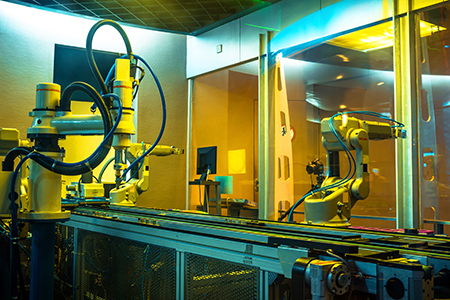 Benefits and Challenges Unique to Robots
Benefits and Challenges Unique to Robots
Since robots are so powerful and fast, they usually do not have built-in provisions for keeping operators safe. Therefore, they are usually fenced-off into a work cell or caged area to keep people out. This work cell is typically protected with special safety sensors and associated controls to stop the robot any time the cell is opened or when workers are sensed where they should not be, and to keep the cell secured when the robot is active. This requires extensive floor space, design effort and testing. It also means that robots are largely dedicated to the one task they were installed for.
Robots were designed as heavy-lifting work equipment, with less emphasis on user-friendly configuration. A robot can require extensive robotics knowledge to program its actions and properly integrate its work with the environment and upstream/downstream systems, which also must be automated. Not only are robots expensive to obtain, they are costly to engineer.
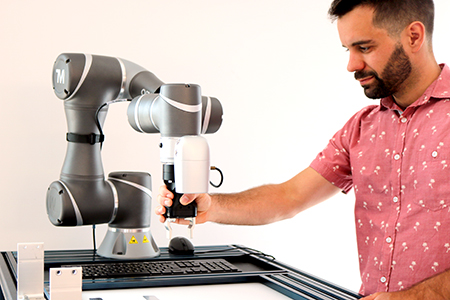 Benefits and Challenges Unique to Cobots
Benefits and Challenges Unique to Cobots
Cobots, on the other hand, were designed with the express purpose of working with humans. They can’t lift as much as larger robots, but their motion abilities are designed to be safe around people, so fences and safety sensors are not required. Since they are generally smaller than robots, they can be much easier to install than robots. For both these reasons, they are easy to slot into any existing workspace. In fact, they are often mounted on mobile stations so they can be moved from one task to another.
Because they are a newer and mission-specific generation of automation, cobots have been designed from the ground up for easy configuration. It is possible to teach them with script or visual flowchart-based software, but they can also be taught by physically moving the articulated arm to the necessary positions. This means anyone can configure them. It also means they are easily reconfigurable for many tasks, so one cobot can be moved about and repurposed for new tasks without significant changeover effort. This flexibility and ease of use means they can be put into service sooner and more fully utilized, leading to a faster return on investment (ROI).
